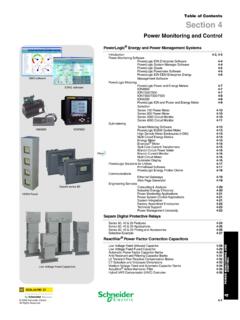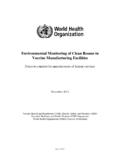Transcription of Just-in-Time Manufacturing System Just-in-Time ...
1 International Journal of Economics, Business and Finance Vol. 1, No. 2, March 2013, PP: 07 25, ISSN: 2327-8188 (Online) Available online 7 Research Article Just-in-Time Manufacturing System : From Introduction to Implement Akbar Javadian Kootanaee1, Dr. K. Nagendra Babu2, Hamidreza Fooladi Talari3 E-mail: Abstract JIT production System identifies the hidden problems in the value chain and reduces the production waste of the System while increasing the throughout (Sales-Raw Material Cost). Even though the JIT System seems to be interesting and less complicated it requires lot of coordination with supply chain to avoid delays in the production schedule.
2 This article discusses in depth the implementation of JIT Manufacturing . The objectives are twofold. The first objective is to acquaint the reader with the overall JIT concept and the factors necessary for its implementation; the concepts presented here represent the ideal principles and methods of implementation. Copyright IJEBF, all rights reserved. Keywords: Just-in-Time , Cost management, JIT implementation, Traditional Manufacturing Introduction JIT in time concept was initiated in Japan making the Toyota as its mater piece. JIT is System whether company starts Manufacturing /purchasing once the customer orders the good effectively making zero inventories. In other words, in a JIT environment materials are purchased and produced as and when it is needed. The whole idea is based 1 PhD student in Commerce, Department of Studies in Commerce, University of Mysore 2 Associate Professor, Department of Studies in Commerce, University of Mysore 3 Student in Master of Accounting, Islamic Azad University of Noor International Journal of Economics, Business and Finance Vol.
3 1, No. 2, March 2013, PP: 07 25, ISSN: 2327-8188 (Online) Available online 8 on the phrase provide the goods just in time as promised when the order is placed by the customer. The opposite of the JIT production is known as JIC (Just in case) System where it produces goods for inventory with the intention of having goods just in case a customer places an immediate order. JIT production System identifies the hidden problems in the value chain and reduces the production waste of the System while increasing the throughout (Sales-Raw Material Cost). Even though the JIT System seems to be interesting and less complicated it requires lot of coordination with supply chain to avoid delays in the production schedule. The whole concept of the JIT is differentiated from traditional productions systems using push vs.
4 Pull systems of production . The push System of production pushes materials to the next stage of the production irrespective of whether time and resources are needed at the next level of production creating lot of inventories at each level of the production flow. The traditional Manufacturing organizations adopt push System where they produce for inventory and work in progress. The pull System of production is where the materials are pulled by next level of the production only when is signaled or required by the next stage of production . This drastically reduces the inventory held as it does not keep any work in progress. JIT concept is built based on the concept of pull production which eliminates the total inventory. This article discusses in depth the implementation of JIT Manufacturing . The objectives are twofold.
5 The first objective is to acquaint the reader with the overall JIT concept and the factors necessary for its implementation; the concepts presented here represent the ideal principles and methods of implementation. What is Just-in-Time (JIT)? Just-in-Time (JIT) Manufacturing is a Japanese management philosophy applied in Manufacturing which involves having the right items of the right quality and quantity in the right place and the right time. It has been widely reported that the proper use of JIT Manufacturing has resulted in increases in quality, productivity and efficiency, improved communication and decreases in costs and wastes. The potential of gaining these benefits has made many organizations question and consider this approach to Manufacturing . For these reasons, JIT has become a very popular subject currently being investigated by many worldwide organizations.
6 Just-in-Time management involves the application of old management ideas; however, their adaptation to the modern Manufacturing firm is a relatively new practice. Presently, many firms are studying and applying the JIT approach in response to an ever more competitive environment. North American organizations are aware of the pressure placed upon them by the success of their Japanese competitors at obtaining phenomenal levels of productivity. In order to remain competitive and experience economic success, these companies have focused on increasing productivity, improving the quality their products and raising the standards of efficiency within their products and raising the standards of efficiency within their firms. The ability to achieve higher standards of productivity without sacrificing quality is also an important goal of a Manufacturing firm.
7 Over the long run, application of JIT Manufacturing may assist these companies in achieving these goals of Manufacturing excellence. 10 History and development of JIT Manufacturing JIT is a Japanese management philosophy which has been applied in practice since the early 1970s in many Japanese Manufacturing organizations. It was first developed and perfected within the Toyota Manufacturing plants by Taiichi Ohno as a means of meeting consumer demands with minimum delays (Goddadrd, 1986). For this reason, Taiichi Ohno is frequently referred to as the father of JIT. The Toyota production plants were the first to introduction JIT. It gained extended support during the 1973 oil embargo and was later adopted by many other organizations. The oil embargo and the increasing shortage of other International Journal of Economics, Business and Finance Vol.
8 1, No. 2, March 2013, PP: 07 25, ISSN: 2327-8188 (Online) Available online 9 natural resources were seen as a major impetus for the widespread adoption of JIT. Toyota was able to meet the increasing challenges for survival through an approach to management different from what was characteristic of the time. This approach focused on people, plants and System . Toyota realized that JIT would only be successful if every individual within the organization was involved and committed to it, if the plant and processes were arranged for maximum output and efficiency, and if quality and production programmes were scheduled to meet demands exactly. JIT had its beginnings as a method of reducing inventory levels within Japanese shipyards.
9 Today, JIT has evolved into a management philosophy containing a body of knowledge and encompassing a comprehensive set of Manufacturing principles and techniques. JIT Manufacturing has the capacity, when properly adapted to the organization, to strengthen the organization s competitiveness in the marketplace substantially the organization s competitiveness in the marketplace substantially by reducing wastes and improving product quality and efficiency of production . The evolution of JIT as observed in the literature is discussed in some detail. Despite the plethora of literature, Zipkin (1991) asserts that a great deal of confusion exists about the subject. This, it is suggested, has led to a fundamentally different approach to JIT programmes in the west, which has the potential to be more damaging than beneficial.
10 There are strong culture aspects associated with the emergence of JIT in Japan. The development of JIT within the Toyota production plants did not occur independently of these strong cultural influences. The Japanese work ethic is one of these factors. The work ethic emerged shortly after World War II and was seen as an integral part of the Japanese economic success. It is the prime motivating factor behind the development of superior management techniques that are becoming the best in the world. The Japanese work ethic involves the following concepts: Workers are highly motivated to seek constant improvement upon that which already exists. Although high standards are currently being met, there exist even higher standards to achieve. Companies focus on group effort which involves the combining of talents and sharing knowledge, problem-solving skills, ideas and the achievement of a common goal.








